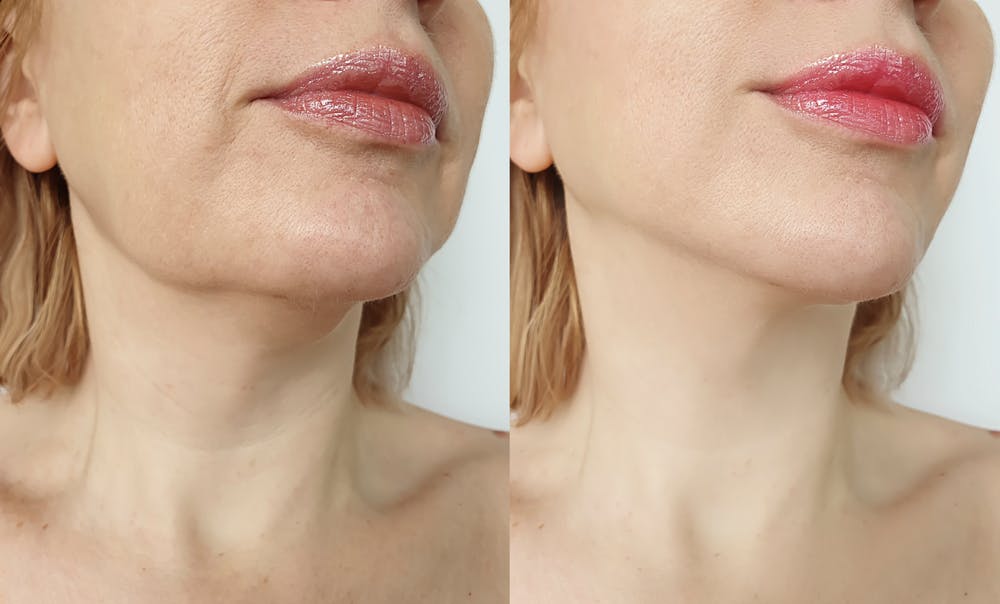
Are you contemplating a mini facelift at the age of 35 and wondering how it might transform your appearance? The decision to undergo cosmetic surgery should not be taken lightly, especially when aiming to maintain or enhance one’s youthful features. A mini facelift can offer subtle yet impactful rejuvenation, but understanding the intricacies of the procedure is crucial before taking the plunge.
Dr. Andre Panossian, a plastic surgeon in Pasadena, CA, has extensive expertise and provides his patients with valuable insights into their suitability, expected outcomes, recovery, and care. His proficiency ensures that individuals considering this specific age-related aesthetic enhancement are well-informed and prepared for both the potential benefits and the inherent risks of the procedure, crafting a foundation for informed decision-making.
Understanding the Mini Facelift Procedure
Key differences between a Mini Facelift and a traditional facelift
A mini facelift targets the lower part of the face to create a youthful appearance, primarily focusing on the jawline and the neck. In contrast, traditional facelift surgery often addresses the entire facial area, including the midface and sometimes the upper eyelids. The most significant distinctions include
- Extent of Surgery: A mini facelift involves less extensive dissection compared to the traditional facelift, making it a less invasive option.
- Recovery Time: Patients generally experience a quicker recovery period after a mini facelift due to the reduced complexity of the procedure.
- Incision Size: The incisions made during a mini facelift are shorter and more discreet, often confined to the hairline near the temples and around the ears.
- Results: The results of a mini facelift are typically more subtle, enhancing the lower face and jawline, while a traditional facelift can provide a more comprehensive facial rejuvenation.
General steps involved in a Mini Facelift surgery
The surgical procedure for a mini facelift, often regarded as a cosmetic surgery aimed at enhancing the facial skin and contour, typically follows these steps:
- Anesthesia: We administer local or general anesthesia to ensure the patient’s comfort during the surgery.
- Incisions: We make shorter incisions discreetly along the hairline above the ear and/or around the earlobes.
- Skin Tightening: The facial skin is gently lifted, and underlying tissues are tightened to refine the facial appearance.
- Excess Skin Removal: Any excess skin contributing to sagging is removed to create a smoother profile.
- Closure: The incisions are carefully closed, often with sutures, to minimize any visible scarring.
The mini facelift, being one of the many facial rejuvenation procedures, focuses on modernizing the appearance of the lower face without the extended downtime associated with more extensive facelift surgeries. It’s an appealing surgical option for those wishing to revitalize their appearance while avoiding a long recovery.
The role of skin quality and facial structure
Determining if you’re a good candidate for a mini facelift at 35 starts with evaluating the quality of your facial skin and its underlying structure. Ideal candidates often exhibit some degree of skin laxity where the skin begins to sag or loosen but still retains a good amount of natural elasticity. Your skin texture also plays a critical role; smoother, healthier skin often responds better to a mini facelift.
Your facial structure is equally important — the procedure is particularly effective for women and men with a well-defined bone structure that can provide the necessary support for the subtle changes achieved with a mini facelift. If you’re noticing signs of aging, such as minor jowls or loose skin around the cheeks and jawline, a mini facelift may be an effective procedure to address these issues.
Expected Outcomes of a Mini Facelift for Mid-30s Patients
Undergoing a mini facelift can catapult a patient in their mid-30s to a more rejuvenated state, with surgery targeting specific areas prone to early signs of aging. The expected aesthetic improvements include a sharper jawline, reduced sagging around the cheeks, and enhanced contours of the face. These subtle improvements work together to restore a youthful appearance without drastically changing one’s facial identity.
Skin quality is refined as the procedure smooths out minor wrinkles and tightens the skin modestly. The appearance post-surgery often reflects a restful and energized visage, with patients noticing a fresher facial appearance that exudes vitality.
Longevity of results
When considering a mini facelift, patients should understand that while the results are significant, the longevity can vary. Typically, the effects of the surgery can last several years, with many individuals enjoying their enhanced appearance for 5 to 10 years, depending on skin quality and lifestyle factors. At 30 and 40 years old, patients need to maintain realistic expectations, as a mini facelift cannot halt the aging process but rather can turn back the clock a few years.
Maintaining the youthful appearance achieved through a mini facelift can be extended with diligent skin care and protection from environmental factors. Regular check-ins with a cosmetic specialist can help manage and sustain the results for as long as possible.

Immediate post-surgery care requirements
The initial phase of recovery following surgery is critical for ensuring a smooth and healthy healing process. We prioritize immediate aftercare to minimize complications and promote a swift return to health. This postoperative period typically involves:
- Monitoring vital signs to maintain bodily stability
- Managing pain through appropriate medication
- Ensuring the surgical site is clean to prevent infection
- Applying dressings or supports to aid the body’s natural healing
Each step is taken with the utmost care, respecting the delicacy of the body’s condition post-surgery. This close attention continues until the patient is deemed stable.
Risks and Complications Associated with Mini Facelifts
While mini facelifts are less invasive procedures than traditional facelifts, they still come with potential side effects. Patients may experience bruising, swelling, numbness, or tenderness around the incision sites, which typically subside within a few weeks. Surgeons often inform patients about transient side effects to ensure they have realistic expectations. It’s important to recognize that even with advanced techniques, surgery introduces trauma to the skin and underlying tissues, necessitating a period of healing.
How to mitigate potential risks
To minimize the risks associated with mini facelifts, it is crucial to select board-certified surgeons with extensive experience in facial cosmetic surgery. They can accurately assess individual patient cases, determining whether a mini facelift is the appropriate treatment. Surgeons also provide pre-and post-operative care instructions that are essential to follow for a smooth recovery. Some strategies to mitigate potential risks include:
- Avoiding certain medications and supplements that can increase bleeding.
- Following a healthy lifestyle and quitting smoking to enhance healing.
- Immediately report any signs of infection or unusual symptoms to the surgeon.
Informed decision-making, along with meticulous adherence to your surgeon’s guidance, can significantly reduce the risks of enduring any complications from mini facelift surgery.
When to Consider a Mini Facelift Follow-Up Procedure
Signs your results may benefit from revision or additional treatments

If you’ve had a mini facelift and are observing changes that undermine your initial satisfaction, it might be time for a follow-up procedure. Pay attention to signs such as:
- Sagging skin, particularly in areas that were previously lifted
- Deepened wrinkles or lines returning after the initial improvement
- Asymmetrical appearance or an imbalance in facial features
- Dissatisfaction with the extent of correction achieved
These signs may hint that your skin has aged or responded to the surgery in ways that call for additional intervention. Women often seek revisions when aging processes counter the benefits of their initial lift. Deciding to undergo further surgery should involve consultation with your specialist.
Long-term maintenance strategies
To preserve the effects of your mini facelift, consider these maintenance strategies:
- Maintain a stable weight; fluctuations can affect the tightness of your facial skin
- Follow a skincare regimen that includes sun protection and hydration
- Consider non-surgical treatments, such as fillers or laser therapy, to complement the lift
Women who pair these strategies with a healthy lifestyle often prolong the need for follow-up procedures. Regular consultation with your cosmetic surgeon can help you navigate the best route for sustained results. Whether through minor touch-ups or lifestyle adjustments, the goal is to maintain your rejuvenated appearance with minimal need for additional surgeries.
Final Thoughts on Pursuing a Mini Facelift at 35
Deciding to undergo surgery, especially at 35, is a step that calls for careful reflection on how this decision intertwines with one’s appearance goals and body image. In the realm of aesthetic improvement, a mini facelift can offer substantial yet natural-looking enhancement, particularly for women who notice early signs of aging.
Studies highlight the psychological boost that accompanies facial rejuvenation yet emphasize the significance of realistic expectations. A mini facelift can redefine the chin and contour the jawline, but it’s not a panacea for all age-related changes. Women considering this lift must also weigh the risks associated with any surgical procedure.
Support from loved ones and a clear understanding of the potential for an uplifted appearance post-surgery can make the journey towards a mini facelift at 35 a considered and fulfilling choice.
Ready to explore the rejuvenating effects of a mini facelift? Dr. Andre Panossian is here to guide you through each step with his extensive expertise in cosmetic surgery. Ensuring the best possible outcomes requires personalized care from a skilled professional like Dr. Panossian.
Don’t wait to take the next step towards a refreshed appearance. Schedule your consultation with Dr. Panossian today and discover the difference that a tailored approach to mini facelifts can make at any stage in your journey toward looking and feeling your best.


